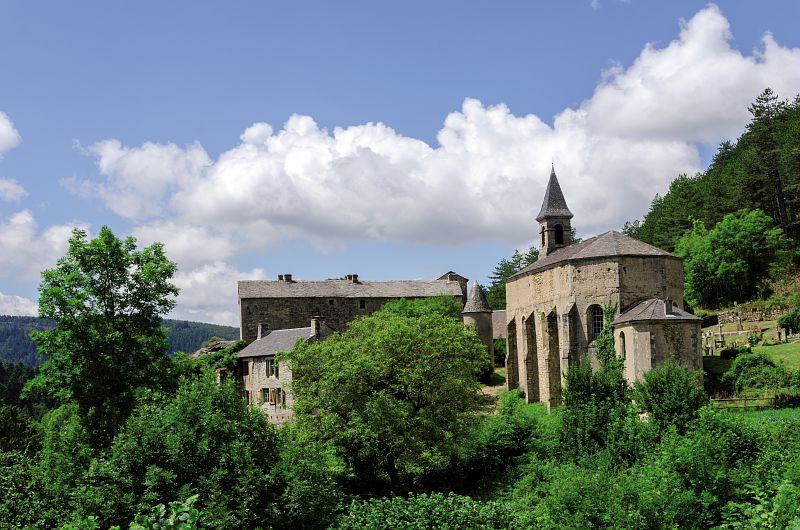
Saint Sauveur des Pourcils
5 points of interest
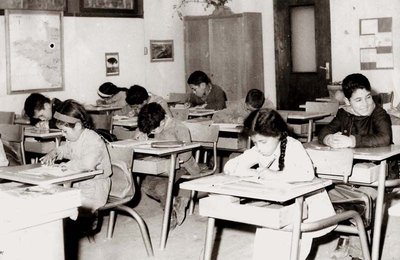
Ecole de Villemagne dans les années 1960 - © Coll. G. Mathon  History
HistoryA cemetery that reveals histories
The small cemetery of Saint-Sauveur des Pourcils, so peaceful today, reveals a rich and eventful history. The gravestones bear the names of Catholic, Orthodox, Protestant, Jewish and Muslim families. This religious plurality is partly due to the arrival in the 20th century of foreign workers to mine argentiferous lead and copper in the neighbouring hamlet of Villemagne. During the murky period of World War II, the wife of a resistance fighter and her six children took refuge in the surrounding area. The Muslim graves bear witness to the period following the Algerian War when a camp for harkis was set up in the region. These Algerian Muslims, who had served in the French army, were employed by the French Forestry Office for the reforestation of the Aigoual massif.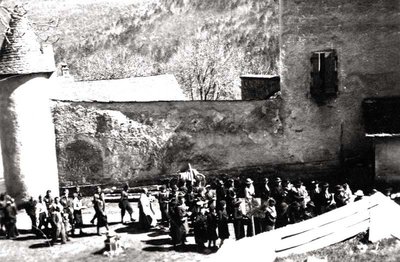
© Coll. G. Mathon  History
HistoryA church at the heart of it all
Why was such an imposing church built in a small hamlet? The profound attachment of the parishioners to their place of worship was key. The church was destroyed three times, by Protestants (1562 and 1703) and by the ravages of time (1848). But each time the parishioners who lived in neighbouring hamlets decided to rebuild it. Despite this determination, the church and cemetery were eventually transferred to Camprieu (1871). The episcopal authorities cited difficulties in accessing the place of worship and disagreements between the mayor and parish priest. The local faithful, who were opposed to the transfer, managed to keep masses for the yearly pilgrimage, baptisms, funerals and weddings in St-Sauveur.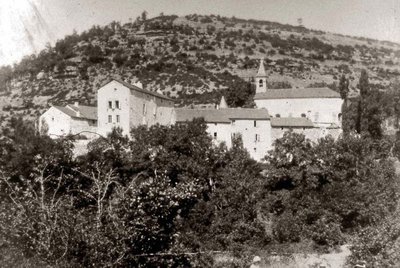
Saint Sauveur des Pourcils au début du XXe siècle - © Coll. G. Mathon  Natural environment
Natural environmentUn domaine agricole reboisé
Today, the hamlet of Saint-Sauveur des Pourcils is surrounded by trees but in the 19th century the Aigoual massif was bare! Its reforestation began as a state programme managed by foresters. The French Forestry Office bought many farm estates to turn them into foresters’ houses. Saint-Sauveur des Pourcils had all the required characteristics: buildings for housing foresters; varied soils; good sun exposure; and water nearby (the river below). The foresters set up a tree nursery to grow young trees and an arboretum to test how well-adapted different species were.
Le hameau et ses alentours avant le reboisement - © Coll. G. Mathon  Architecture
ArchitectureCastle or farm estate?
In the 12th century, minor vassal lords of the Roquefeuil family ruled from a castle at Saint-Sauveur des Pourcils. They lived in autarky with their livestock, large pastures and a share of the farmers’ harvests. No remains from that period survive. The main building looks more like a farmhouse. Over the centuries, the castle has become a large farm estate with outbuildings.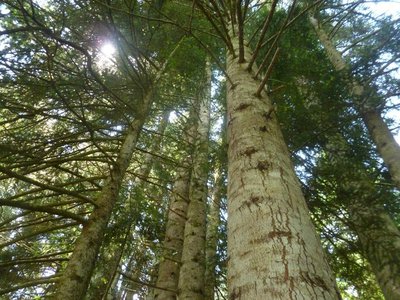
Sapinière en futaie régulière - © Elodie Mazel  Natural environment
Natural environmentArboretum
To begin with, arboretums were experiments to study the behaviour of tree species introduced to the massif as part of the reforestation programme from the late 19th century on. Over time, their scientific character gave way to a more educational and ornamental outlook. On the Aigoual, the French Forestry Office maintains a network of arboretums that are representative of the forest’s diversity and of the work carried out by foresters on the massif since the early 20th century.
The waymarked circuit only covers a part of the vast arboretum.
Description
From the car park, the path first leads into the centre of the hamlet, before entering the arboretum by a trail that leads down into the forest towards the brook. Once you have crossed a footbridge, the path gently heads uphill to the track that takes you back to the car park.
- Departure : Saint Sauveur hamlet
- Arrival : Saint Sauveur hamlet
- Towns crossed : Saint-Sauveur-Camprieu
Forecast
Altimetric profile
Recommandations
Horses and mountain bikes are not allowed on discovery trails.
Information desks
Tourism & national parc'house
Col de la Serreyrède, 30570 Val d'Aigoual
The Maison de l'Aigoual houses the tourism office Mont Aigoual Causses Cévennes and the Maison du Parc national. This visitor centre provides information on and raises awareness of the Cévennes National Park, its sites and events as well as the rules that must be observed in the National Park's central zone.
On site: changing exhibitions, video projections, Festival Nature events and shop Open year-round
Access and parking
Parking :
Calculateur d'itinéraire Lio
Utilisez le calculateur liO pour organiser votre trajet en région Occitanie.
Autres régions
Calculez votre itinéraire en Auvergne Rhône Alpes sur Oùra
Biodiversité autour de l'itinéraire
Source

Report a problem or an error
If you have found an error on this page or if you have noticed any problems during your hike, please report them to us here:

